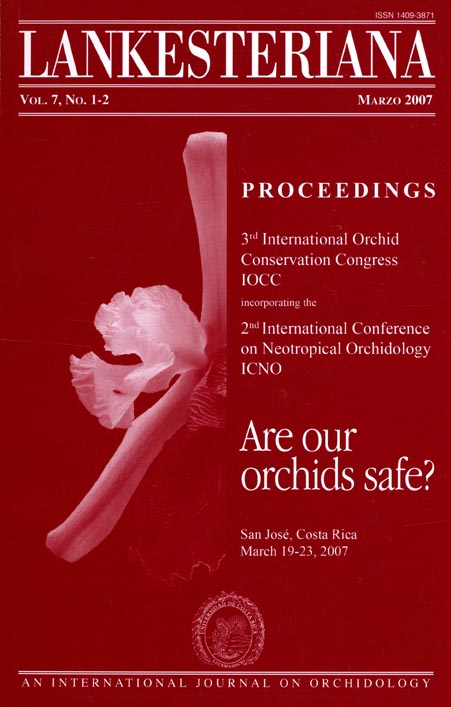Molecular genetic diagnosis of the ‘taxonomically difficult’ Australian endangered orchid, Microtis angusii: an evaluation of the utility of DNA barcoding
DOI:
https://doi.org/10.15517/lank.v7i1-2.19500Keywords:
Species diagnosis, barcoding, practical outcomes, clonality, Internal Transcribed Sequences (ITS), Single Nucleotide Polymorphisms (SNPs)Abstract
As species are the common currency for conserva- tion efforts, their accurate description is essential for efficient preservation of biological diversity. The use of DNA Barcodes, short DNA sequences that evolve fast enough to differentiate species, has been pro- posed both for the discovery of new species and the identification of previously described species.
Downloads
Downloads
Published
How to Cite
Issue
Section
License
According to the Open Access policy promoted by the University of Costa Rica, all the papers published by Lankesteriana are licensed under the Creative Commons copyright and can be downloaded free of charge. The journal holds copyright and publishing rights under the CC BY-NC-ND 3.0 CR license.
Before the publication of the materials submitted by the author(s) in LANKESTERIANA, the author(s) hereby assign all rights in the article to the Lankester Botanical Garden.








